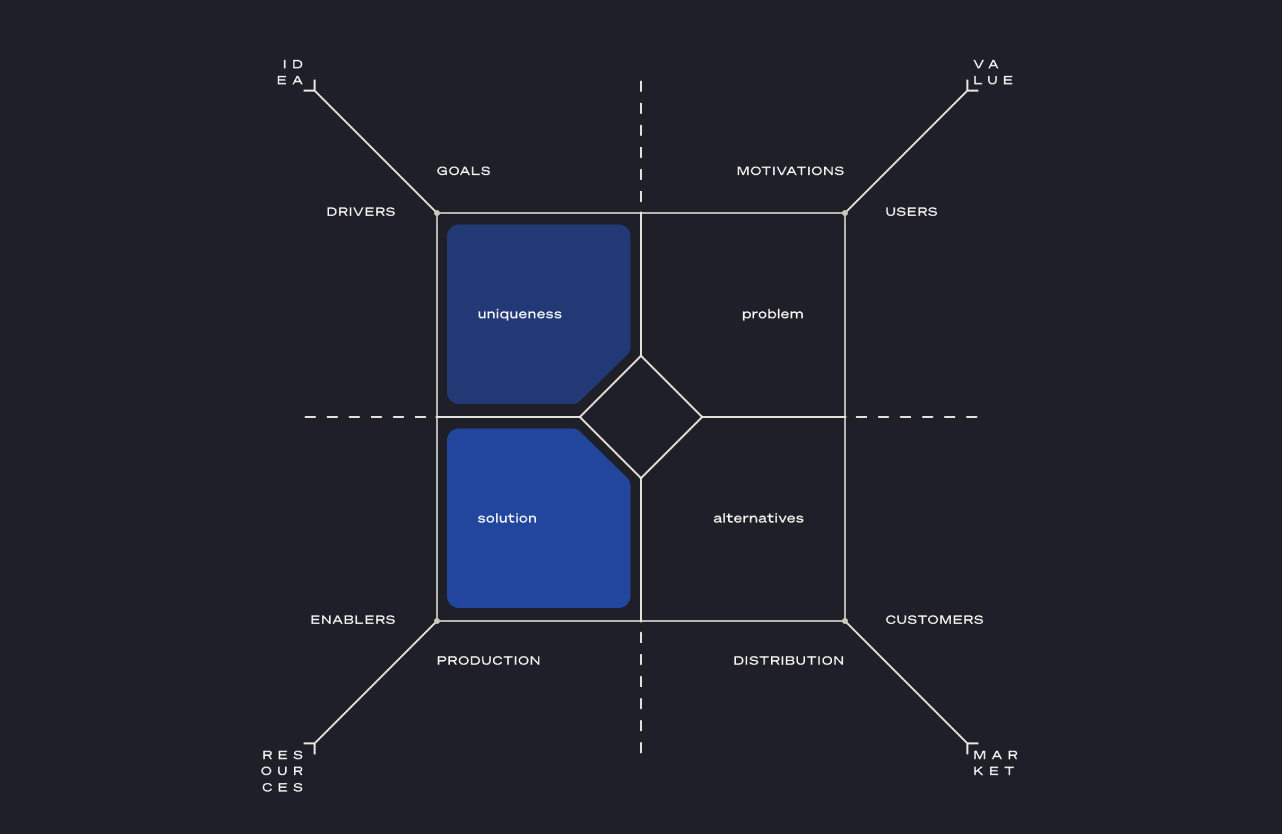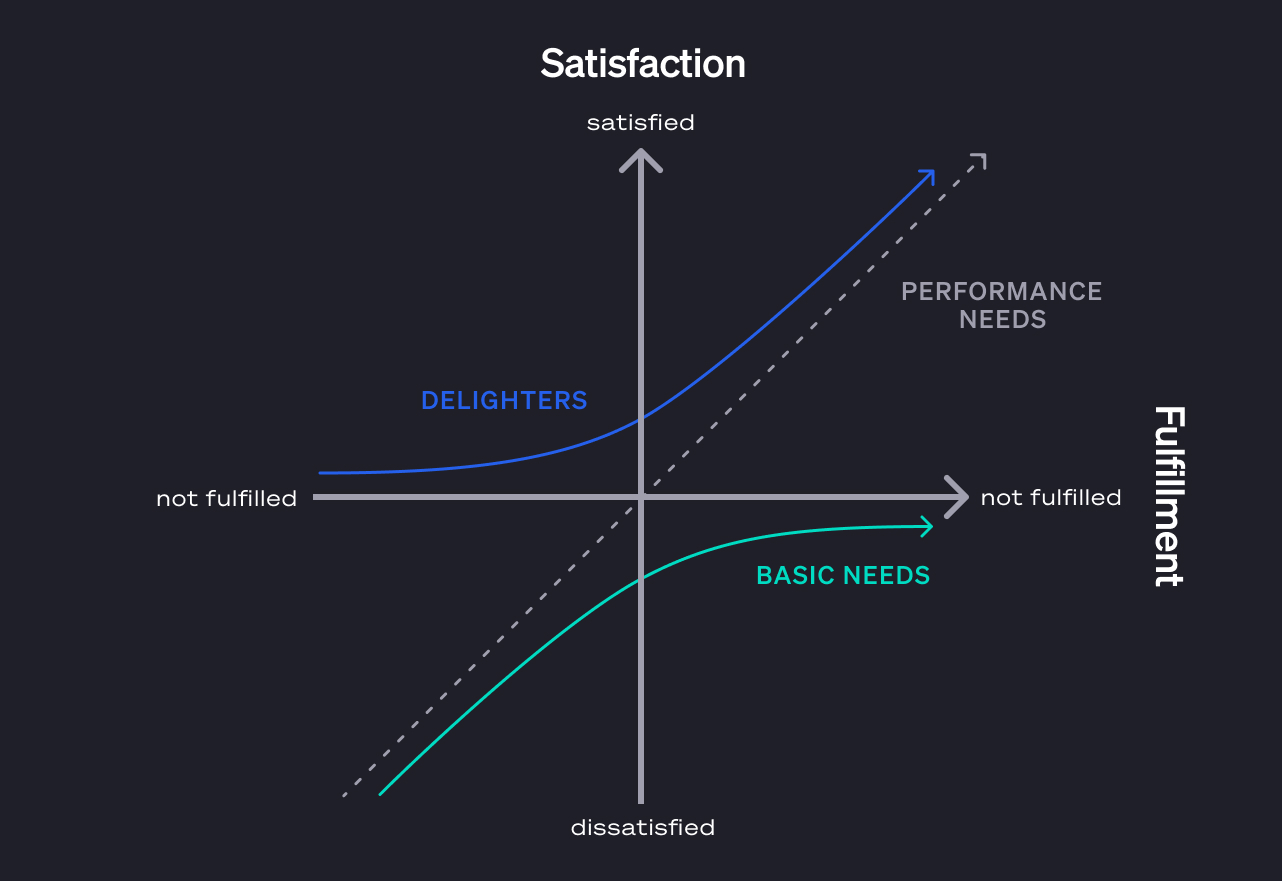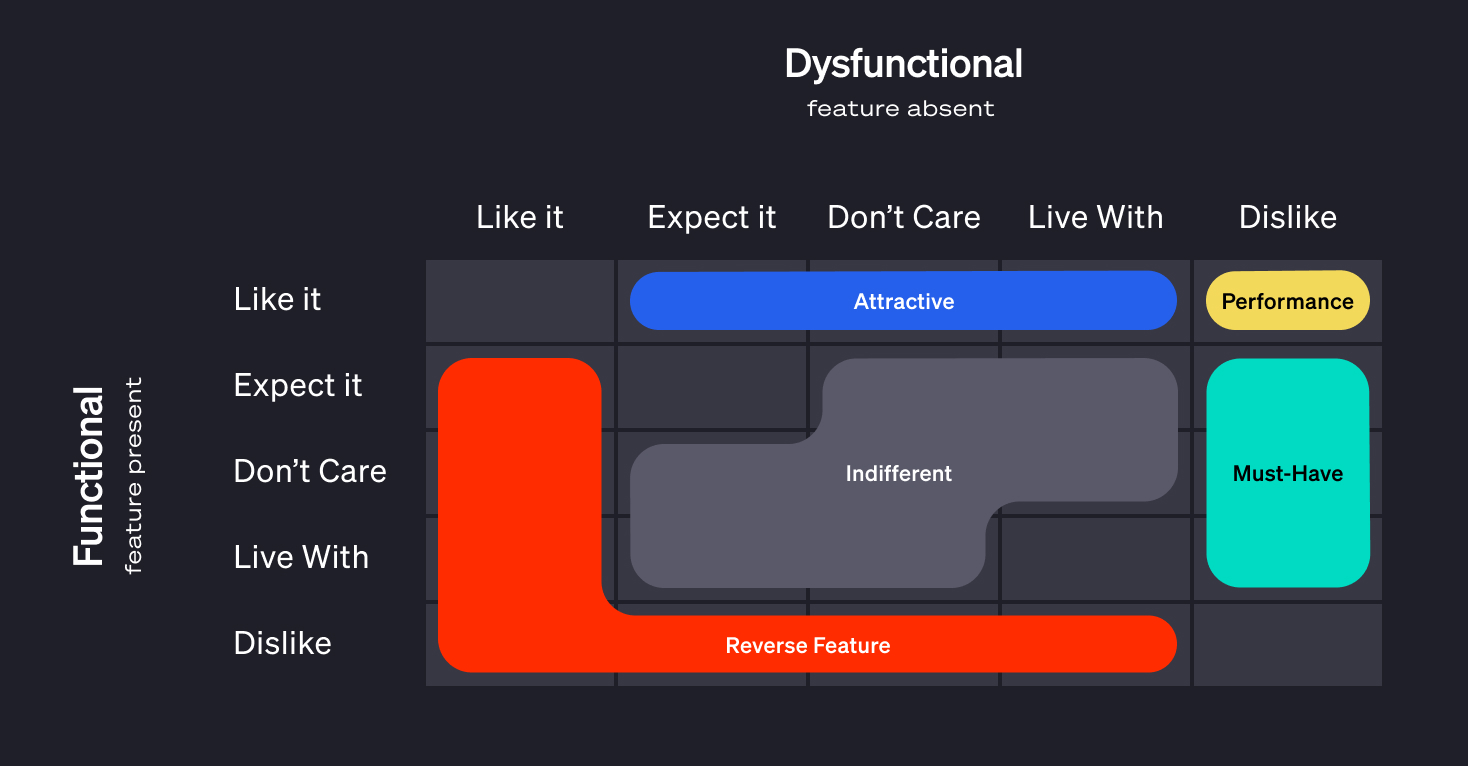The Kano Model — How the Product Field Tells You When To Use It

At Field, we are currently working on Method Advice, a new feature that provides contextual method advice based on the results from the Product Field sense-making process.
Every suggested method will be featured with a how-to guide so even inexperienced product teams can make use of them effectively. To demonstrate the hands-on nature of these method instructions, this post is meant to serve as an example. It offers a slightly abridged version of the guide Field provides to instruct the use of the Kano Model. And in case you're interested in further such examples, there are two more on this blog. One describes the Stakeholder Map, another is a guide to Why/How Laddering.
The Kano Model
The Kano Model helps test, categorize and prioritize potential features for new products and services. It classifies them into five categories by mapping them according to the customer satisfaction they generate on the one hand side, and the functionality they provide and the associated cost on the other. It can be used to conceptualize feature profiles, empirically research customer preferences, and inform product strategy.
Result
- A classification of product features according to their perceived value
- A shared understanding of a product’s value profile
- Guidelines for future feature development
Relationship to the Product Field
The Kano Model helps evaluate and prioritize features, which makes it a central tool for work in the Solution and Uniqueness areas. It helps you understand which features will be perceived as unique and which as “only” performance or basic functionality.
When you have classified features according to the model, you can also evaluate prerequisites and consequences for Enablers, Production and Distribution.

Source
The Kano Model was developed by Dr. Noriaki Kano, then professor of quality management at the Tokyo University of Science, in the 1980s while researching the factors contributing to customer satisfaction and loyalty. It was first documented in his 1984 paper “Attractive Quality and Must-be Quality”.
While the method was further developed in the 1980s and 1990s, the 2000s and 2010s saw an accelerating spread from quality management to product development and neighbouring disciplines. It has since become an established tool in product strategy and management.
This description borrows heavily from Daniel Zacarias’s “Complete Guide to the Kano Model”.
Description
The Kano Model maps potential features along two axes: customer satisfaction (from “frustrated” to “delighted”) and provided functionality (from “none” to “best”). Different types of features can then be mapped in the following way:

- Attractive (“delighters”): unexpected features that, when presented, cause a positive reaction.
- Performance: the more of these features you provide, the more satisfied your customers become.
- Basic (“must-have”): expected by customers; if your product doesn’t have them, it will be considered incomplete or just plain bad.
- Indifferent: features whose presence (or absence) doesn’t make a real difference in customers’ reaction to the product.
- Dissatisfaction: features whose presence will upset customers.
While the first three types are desirable, the second two are to be avoided: Dissatisfaction features actively repel potential customers, while indifferent ones have no positive return on investment.
Over time, market evolution and a process called hedonistic adaptation make sure attractive features decay: As customer expectations change with habituation and the level of performance from competing products, features move from attractive to performance to basic.
The true power of the Kano Model is that this classification is not only a conceptual framework, but can also be used to empirically determine customer preferences using the Kano questionnaire.
The questionnaire consists of a pair of questions for each feature you want to evaluate:
- One asks your customers how they feel if they have the feature.
- The other asks how they feel if they did not have the feature.
The first question is called the functional form, the second the dysfunctional form; both can only be answered with very specific options. To each “how do you feel if you had / did not have this feature”, the possible answers are:
- I like it
- I expect it
- I am neutral
- I can tolerate it
- I dislike it
From the possible combinations of answers to the questions, the following evaluation table can be constructed:

It allows you to classify the feature under consideration as Attractive (A), Performance (P), Must-have (M) and Indifferent (I). It also shows when a feature would lead to Dissatisfaction and the customer would indeed want the reverse of the feature under consideration (R), and if the feature is Questionable (Q) due to conflicting answers.
If you want to use the model in a thorough empirical investigation, the following process is advisable:
Step 1
Select the features you want to evaluate.
Step 2
Build a prototype that lets users or potential customers experience these features as independently from other features as possible. Alternatively, describe the features as concretely and vividly as possible.
Step 3
Choose users or (potential) customers as interviewees. Segment them into early, late and non-adopters to keep their reactions to the feature comparable.
Step 4
Show the interviewees the feature or tell them about it.
Step 5
Let the interviewees answer the questionnaire in a way that makes the answers easy to compute, either in an online survey that feeds into a spreadsheet or in a dedicated Kano survey tool.
Step 6
Tabulate and the answers per user/customer segment to arrive at the classification of the feature. This can be done in a discrete fashion, by just summing up the respective answers per cell of the evaluation table, or in a more sophisticated continuous way using a more advanced spreadsheet (e.g. the one provided by Daniel Zacarias).
Step 7
Prioritize features according to the classification and your overall product strategy.
Learn More
Now that you have learned about workings of the Kano Model, and how Field presents method instructions, you might be interested in how Field actually helps teams get to a shared understanding of their situation. How Field helps them facilitate the sense-making process that leads to the contextual method advice.

Starte deine zielgerichtete Field Testphase mit einem unserer Product Coaches. Oder buche eine persönliche Demo Session.




